Or search by topic
Number and algebra
Geometry and measure
Probability and statistics
Working mathematically
Advanced mathematics
For younger learners
Published 2009 Revised 2018
The Development of Algebra - 1
1. In the beginning ...
Knowledge about the possible beginnings of human mental development comes from research on the co-evolution of language and the human brain. The central idea that comes out of this research is that mankind, uniquely, is what is called a 'symbolic species'. That is, we have the ability to make ideas 'visible in the mind'. This means we can create, manage, manipulate and blend images in ways
that help us to form new relationships and produce new concepts.
We can only speculate on the earliest stages in the development of mathematics but we do have evidence which shows that we have the power to visualise and represent physical objects in our mind. This power is seen in the representations of counting, bartering and building activities of early civilisations. In particular, our perceptions of symmetry seem to have produced many kinds of geometrical
representations in different cultures.
2. The Pythagoreans (c. 550 - c. 450 BCE)
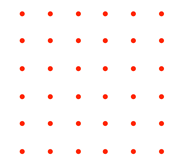 |
 |
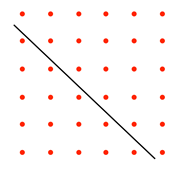 |
In these images, a square pattern has been divided into different areas, making rectangles or triangles.
 |
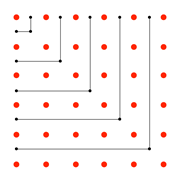 |
In the above two images, other shapes have been produced, leading to speculations about relationships between numbers and areas, and it is thought that the elementary number theories of the Pythagoreans might have been generated by images like these [see Note 1 below].
Further manipulation, dissection of squares and rearrangement, leads to images of right-angled triangles and the familiar relationship between numbers and areas. For example:
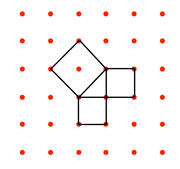 |
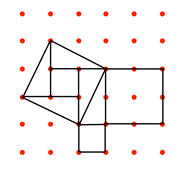 |
3. Egypt: The Rhind Papyrus.
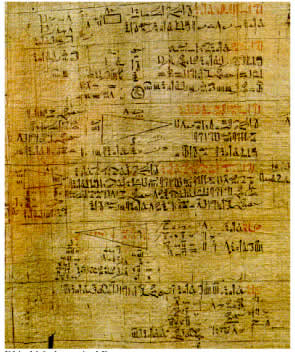 |
In particular, the Papyrus has a series of problems showing how to solve what we could call 'linear equations' by a method that became commonly used by merchants throughout the Mediterranean countries for some three thousand years, called the 'Method of False Position'. It is used for all kinds of calculations involving comparison of values and quantities. This method still appeared in school text books in the early 20th century. |
Here is Problem 26:
This belongs to the group of '$h$' problems, sometimes written as 'heap' meaning 'quantity' or 'number'. $\bar{4}$ is an example of the usual way we represent Egyptian 'unit' fractions.
| In a quantity and its $\bar{4}$ (is added) to it so that $15$ results | A quantity is added to a quarter of itself and the answer is $15$
|
|
|
Calculate with $4$
You shall calculate its $\bar{4}$ as $1$. Total $5$.
|
You begin by assuming $h = 4$,
so, as the left hand side is $h + \frac{h}{4}$
this gives $4 + 1=5$:
$h = 4$ does not work as it gives an answer of $5$ not $15$.
|
|
Work with $5$ to find $15$. \ . $ ~~~~~5$
\ $2~~~~10$
$3$ shall result.
|
Now take the $5$ and divide it into $15$ to get $3$. | |
|
Multiply $3$ times $4$
$~.~~~~~~3$
$~2~~~~~6$
\ $4~~~~12$
$12$ shall result
|
Multiply the $4$ by $3$ to find the result you want, $12$. | |
|
. $~~~~12$
$\bar{4}~~~~~ 3$ total $15$
The quantity $12$ its $\bar{4}~~~3$.
Total $15$
|
So, $12$ add a quarter of $12$ is $15$. |
In modern notation, the problem looks very easy: $$h + \frac{h}{4}=15$$
We begin by using $h=4$ which immediately makes the fraction $\frac{h}{4} = 1$
So the left hand side is $5$, but we need $15$.
If by using $4$ we obtain $5$, what do we need to use to get $15$?
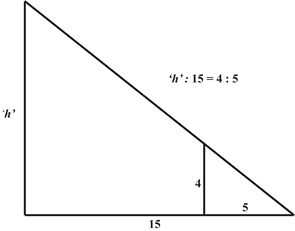 |
The sundial was one of the first instruments used for measuring time, and the properties of the right-angled triangle were well known to ancient people (Problem 56 deals with similar triangles). The slopes of pyramids and other sloping surfaces were measured by the 'seked' - the horizontal distance measured for every cubit of height. |
Visualising a triangle like this would make the problem much simpler and the ratios could then easily be compared. $$\frac{\mbox{'}h\mbox{'}}{15}=\frac{4}{5}$$
So, for the denominator of the right hand ratio to be $15$, we need to multiply the numerator and denominator of the ratio $\frac{4}{5}$ by $3$.
4. Early Indian Mathematics (c. 1500 - 500 BCE)
 |
For two squares of the same size, it is easy to see how to combine the areas to make one square, but not obvious for squares of different sizes.
|

"If it is desired to combine two squares of different measures, a [rectangular] part is cut off from the larger [square] with the side of the smaller; the diagonal of the cut-off [rectangular] part is the side of the combined square."

"Alternatively if it is desired to combine two squares of different measures, a rectangle is formed with the side of the smaller [square] [as breadth] and that of the larger [as length]; the diagonal of the rectangle [thus formed] is the side of the combined square."
These instructions clearly show a knowledge of the 'Pythagorean relation'.
The base line for the altar was always East - West and careful and precise interpretation of the instructions enabled the priests to build the falcon 'fire-altar'.
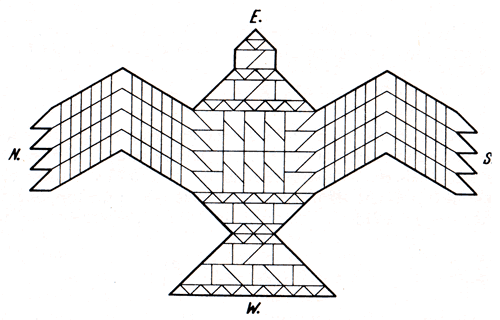
5. Old Babylonian Mathematics (c. 1850 - 1600 BCE)
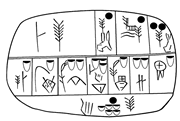
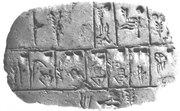
Accounts for cereals, beer or oil - about 3,000 BCE
'Cut and Paste' Geometry: Removing a Square from a larger Square.
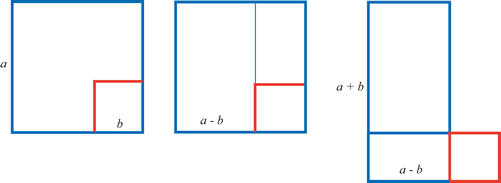
Word Problems
|
Length, Width.
I have raised, length and width. Surface: $252$
I have put together length and width: $32$
$32$ put together,
$252$ surface: $18$ length, $14$ width
|
The problem and answers are stated,
and the method is described.
|
|
| This is the way of doing it: | Here is the arithmetic: | |
| $~~~~~$break off half of $32$: this gives $16 $ | $\frac{32}{2}=16$ | |
| $~~~~~$raise $16$ by itself: $256$ | $16^2=256$ | |
| $~~~~~$leave out the surface: $256 - 252 = 4 $ | $256-252=4$ | |
| $~~~~~$find the side of this square $4$: it is $2$ | $\sqrt{4}=2$ | |
| $~~~~~$put together $16$ and $2$: $18$ length | $16+2=18$ | |
| $~~~~~$tear out $2$ from $16$: $14$ width | $16 - 2=14 $ | |
| I have raised length and width. $~~~~~ 252 $ | $(16+2)(16-2)=252 $ |
The visual thinking behind the calculation appears to have gone like this:
We have the area of a rectangle, $252$;
We have the sum of its length and width, $ 32$ (the semi-perimeter);
We know from practical experience (see diagram above); that by removing a small (red) square from a larger (blue) square, we can make a rectangle.
So, if we make the side of the large square half of $32$; then the area of the large square will be $256$.
Now take away the rectangle, (area $252$), and we are left with the small (red) square.
Geometrically, this will always work whatever the lengths of the sides concerned. Arithmetically , the problems were arranged so that the numbers used in the calculation always resulted in a perfect (red) square.
Many more examples like this have been discovered, and as well as the underlying geometrical visualisation, there is also the clear emergence of an algorithmic process . The Babylonians had established one of the important essential aspects of problem-solving. They had established a method for solving particular types of
area problems , and it was this method that was taken over by later generations of scholars and eventually developed into the algorithm we use in classrooms today.
6. Greek Geometry
Constructing a square equivalent in area to a rectangle
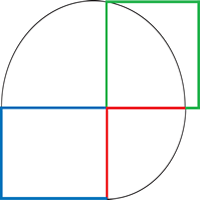 |
The red side of the rectangle is brought into line with the upper blue edge by drawing an arc (radius r ). The (red + blue ) line is bisected to find the centre of a circle, and a semi-circle is drawn. The side of the square required is the green vertical line. | |
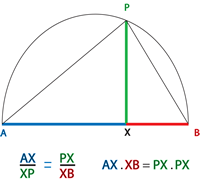 |
In this diagram there are three similar right-angled triangles, APB in the semicircle, AXP and PXB. The coloured sides of the triangles correspond to the diagram above. The relationship shown is the equivalence of corresponding ratios. |
7. The Arab Civilisation
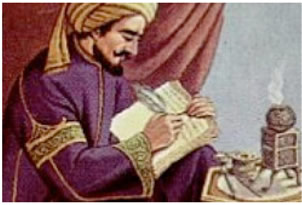
Conceptual Blending
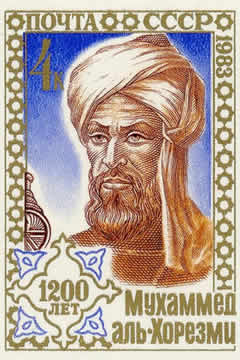
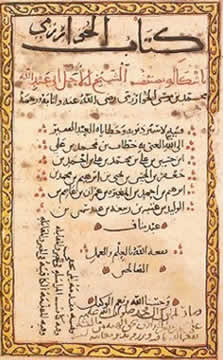
|
The six cases of equations were:
|
In our notation:
|
Case 5. Square and Roots are Equal to Numbers
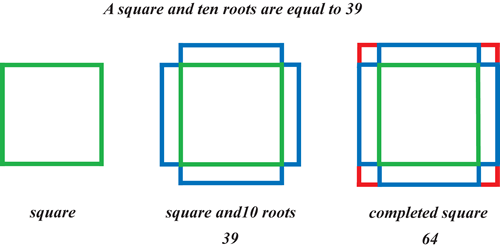
Case 4. Squares and Numbers are Equal to Roots.
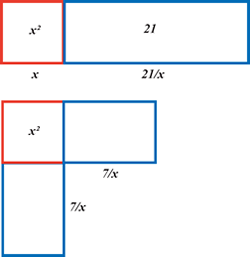 |
Compared with the Babylonian word problem in section 5 above, this is another case where the semi-perimeter of the sides of the rectangle are given, so that the area of the square made with half the root is larger than the area of the rectangle. In this case the algebra of his first solution is:$$\frac{10}{2}-\sqrt{\frac{10^2}{4}-21}$$
and his second procedure is $$5+\sqrt{5^2-21}=7$$ which gives the diagram opposite, where the $7 \times 7 = 49$ fills the empty space.
|
N.B. Pedagogical notes related to the history of algebra discussed here can be found by clicking on the " Notes' tab at the top of this article .
Notes
-
Evidence for this kind of activity is deduced from fragments of writings by the early Pythagoreans. Also, the elementary number theory in Euclid Book VII. Katz (1998) has a section on the Pythagoreans (pp. 48-51)
-
The dating of early Indian mathematics has always been controversial. As with other civilisations it was basically an oral culture, and what was written down appeared long after it was first conceived. Added to this the Indian scholars wrote on palm leaves that rotted away quite quickly in the humid climate. Documents were copied and copied many times, so we never have the original text and it is virtually impossible to reconstruct the early history of Indian mathematics with any certainty.
-
Quoted from Kim Plofker's chapter on Indian Mathematics in Katz (2007 p.387).
-
Both quotations are from the Baudhayana - Sulbasutra (c. 1,000 - 500 BCE) in Kim Plofker's chapter 4 in Katz 2007.
-
Evidence for this geometrical basis comes from recent research into the language and culture of the period by a group including Jens Hoyrup from Roskilde University in Denmark and Eleanor Robson from Cambridge.
-
This is my version of the problem using Hoyrup's (1984) Babylonian 'word list'. See also Pedagogical Notes item 5.
-
The 'Pythagorean' diagram on the right hand grid in section 1 above has a rational area of 5 units, and non-rational sides.
-
Heath, T. L. (1963) A Manual of Greek Mathematics. Dover (original Oxford University Press, 1931)
-
'Mal' was Euclid's word for 'wealth' (the unknown).
-
A Dihram is a unit of currency, still used in the Arab Emirates.
-
All translations in this section are quoted from Berggren, Chapter 5 in Katz (2007).
References
Arcavi, A. (2003) The role of visualisation in the learning and teaching of mathematics. Educational Studies in Mathematics 52 (3) 2003 (215-224)
Weblinks
MACTUTOR
NRICH
Related Collections
You may also like
The Dangerous Ratio
This article for pupils and teachers looks at a number that even the great mathematician, Pythagoras, found terrifying.
All about Infinity
Infinity is not a number, and trying to treat it as one tends to be a pretty bad idea. At best you're likely to come away with a headache, at worse the firm belief that 1 = 0. This article discusses the different types of infinity.
Maths in the Victorian Classroom
What was it like to learn maths at school in the Victorian period? We visited the British Schools Museum in Hitchin to find out.

